White potatoes get a bum wrap, but they are the most delicious tuber to grow in your own backyard. Not only that, they are easy and fun to grow, especially if you have children. From sprouting your own seed potatoes to digging for buried treasure, growing potatoes provides wonder and joy for kids and adults alike.
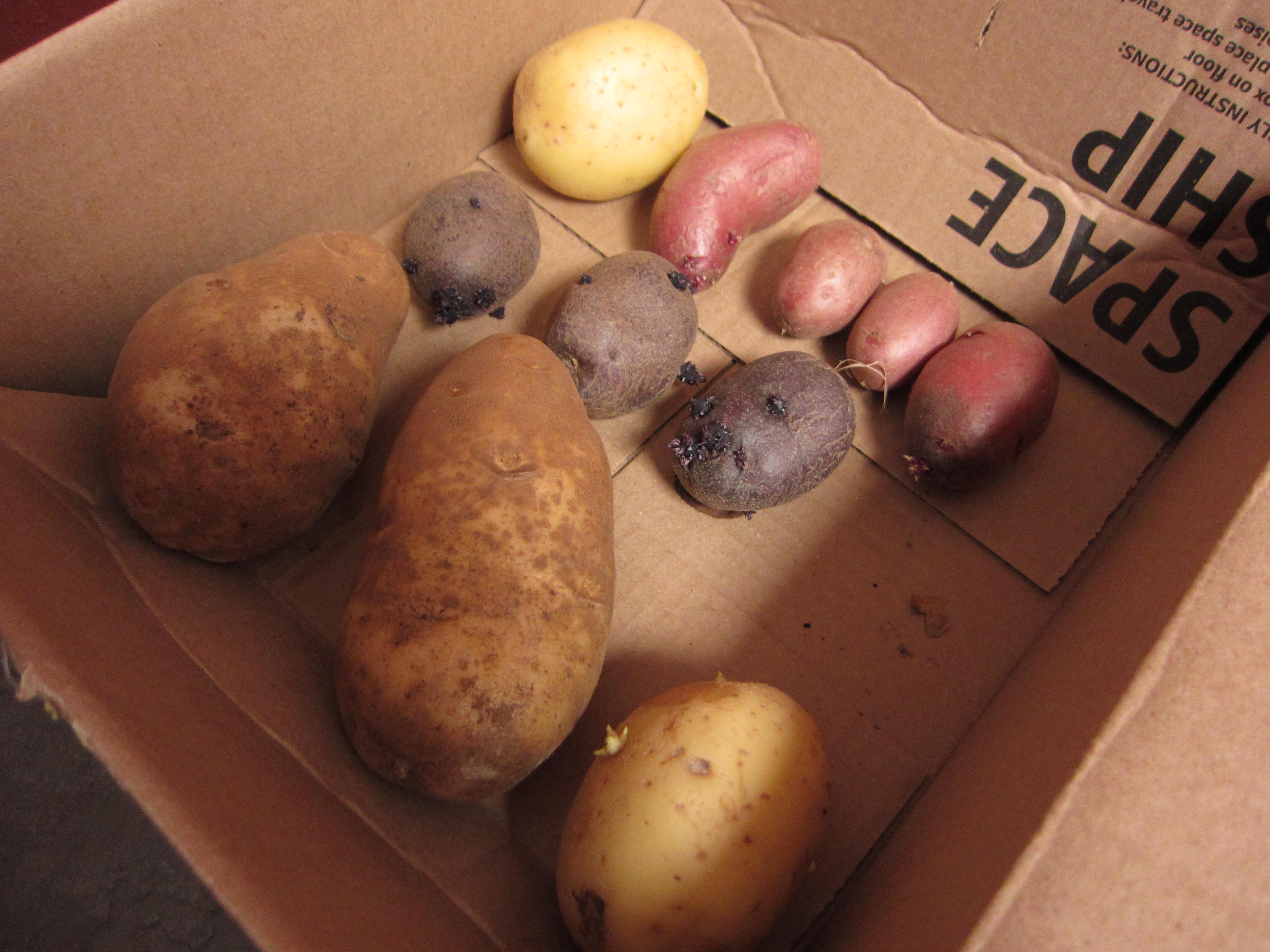
First things first – sprouting seed potatoes
Potatoes grow from potatoes, so it’s easy to start your own. You may even have skanky potatoes sprouting in your pantry right now. Fair warning: diseases spread easily through generations of potatoes, so it is best to start with certified disease-free seed potatoes from reliable sources like Wood Prairie Farm. In a pinch, though, you can grow from those aforementioned skanky potatoes in your possession or purchase from the farmers market. Just make sure those potatoes haven’t been sprayed with a hormone to retard sprouting (as are most supermarket potatoes).
To sprout seed potatoes, place the chosen varieties in a shallow box with space between them. Put the box under a south facing window so that it gets ambient but not direct light. Direct light will cause greening, and therefore the formation of a toxin you don’t want in your potatoes. Key word: ambient.
Next: Wait
In a week to a month you’ll begin to see eyes forming on your potatoes. We’re going for short bushy sprouts, not long spindly sprouts. If your eyes (sprouts) are long and leggy, move your box to a place with more light.
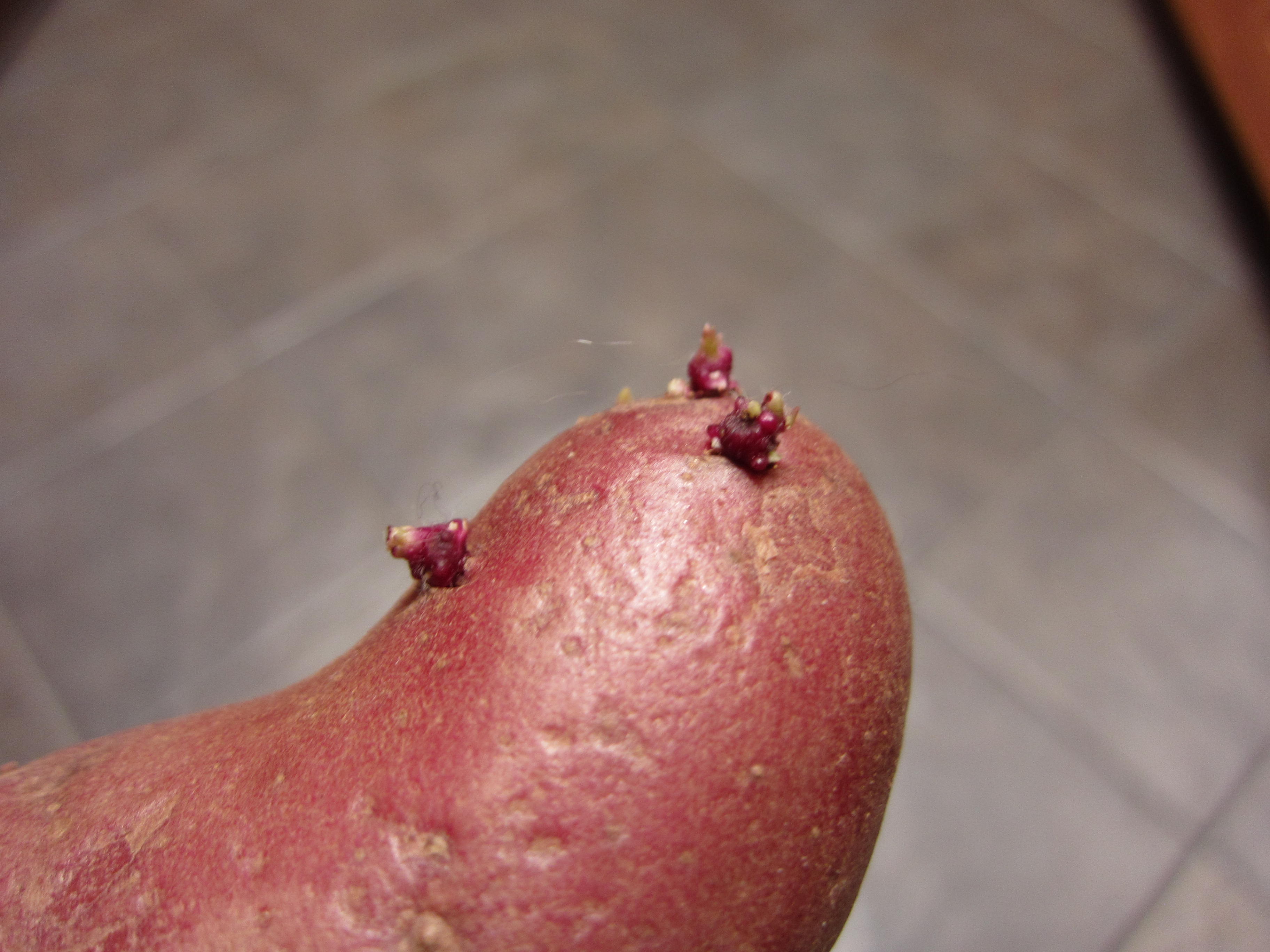
When the sprouts are about 1/2″ to 3/4″ long, now we’re getting somewhere.
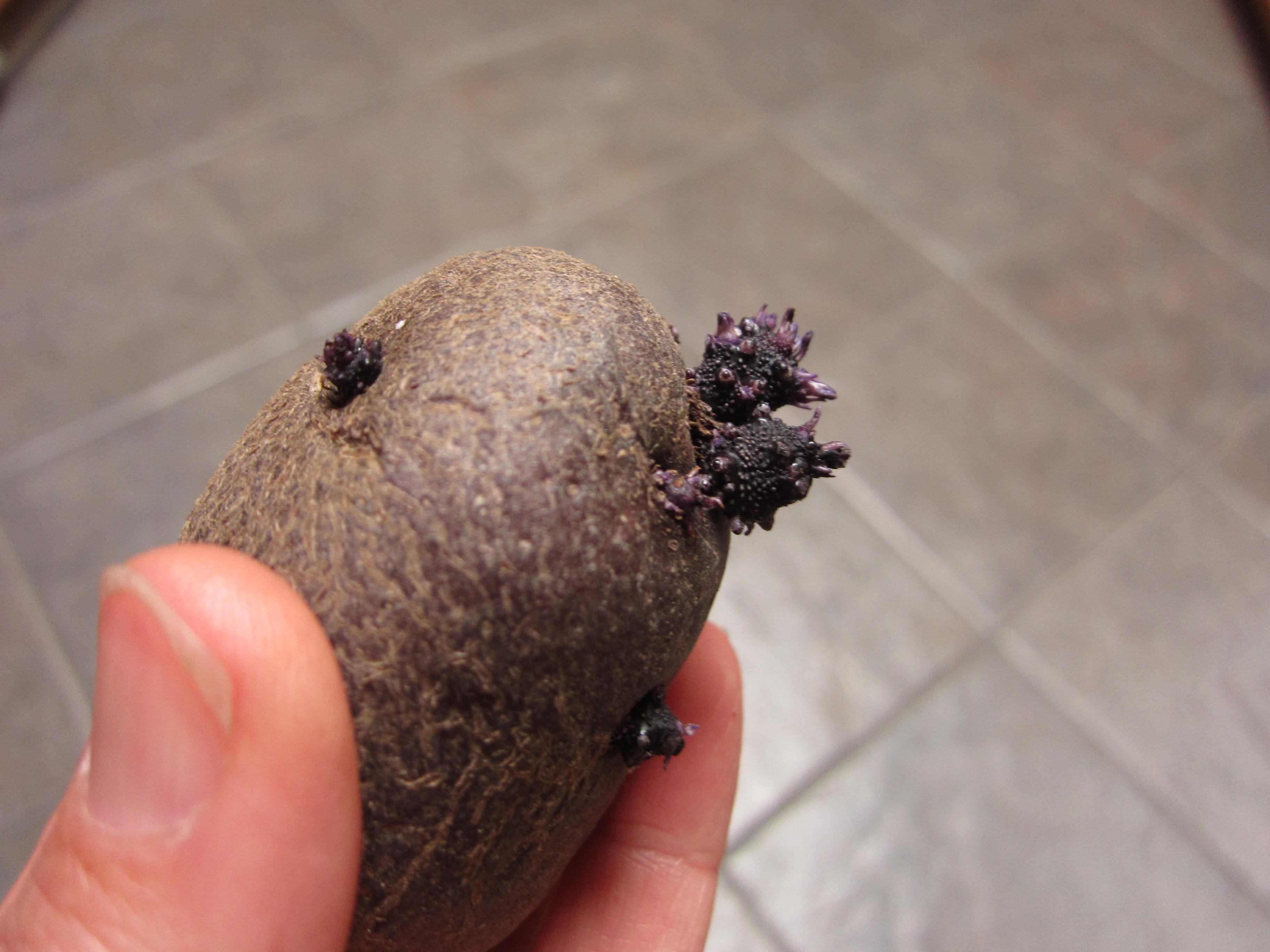
Then Strategize
Once you have sprouted potatoes, you can strategize for how many pieces to cut. Each piece should have at least 2 eyes and should weigh at least 1.5 ounces.

On the potato above, we see options. We can cut the potato into at least 2 pieces because we have eyes near the top and another set growing in the middle. We’ll wait until there are more sprouts to choose from before cutting.
To Cure or Not to Cure
Some people leave their cut seed potatoes out to cure for a few days before planting. Others dust the cut ends with powder to help seal the cut. The folks at Wood Prairie Farm do neither. They cut and plant on the same day. It still works. We would add that if you have very soggy soil, it may be worth curing for a few days to ensure that your seed potatoes don’t rot. Otherwise, plant away after cutting.
Potatoes not sprouting?
Aside from the hormone treatment mentioned above, some seed potatoes have to go through a vernalization process where they need to sit in a cold place for 6-8 weeks to trigger sprouting. Your seed potato vendor should advise you if that is the case. You could try throwing an apple or an onion in with your seed potatoes to see if the ethane gas will help move things along. Otherwise, plan for spring planting instead.
Growing your own potatoes couldn’t be easier. Search Gardenerd for other posts on how to grow and harvest potatoes.
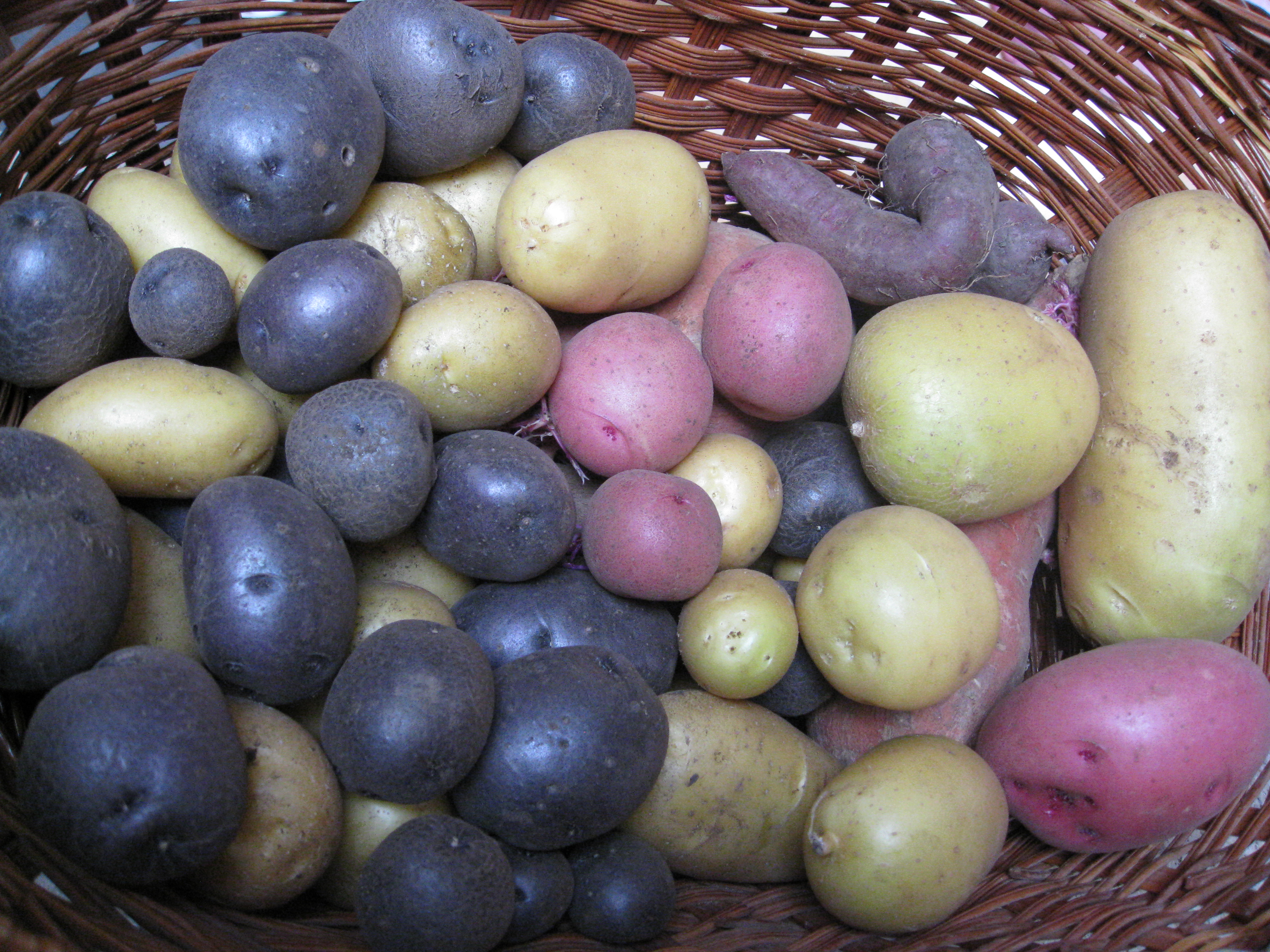

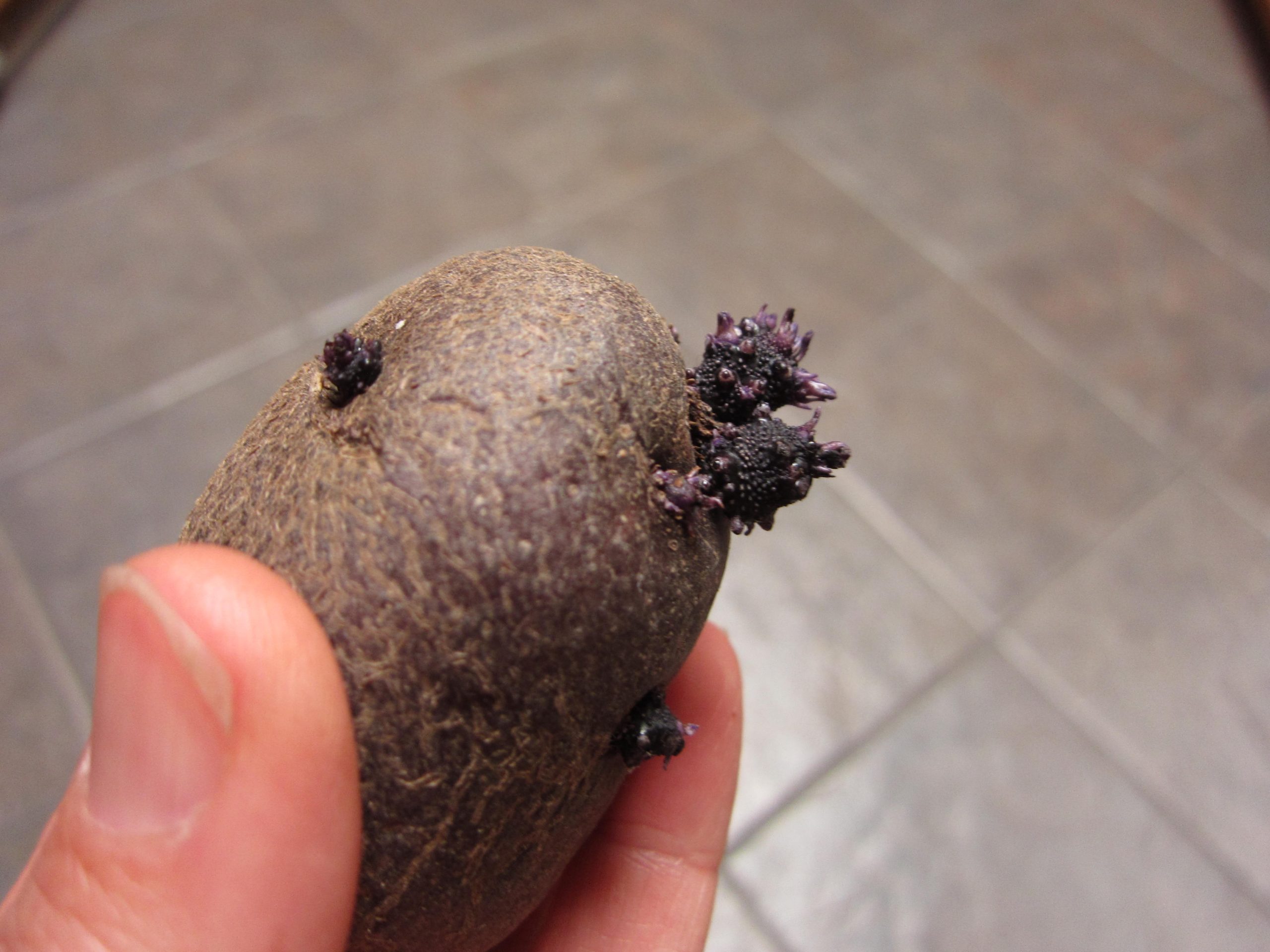
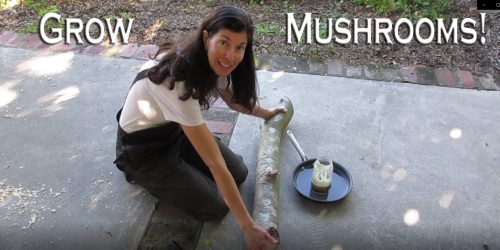

Pingback: YouTube: Harvest Potatoes from Less Space - Part 2 - Gardenerd
Pingback: Wordless Wednesday: Transition Times - Gardenerd
Pingback: YouTube: How to Plant Potatoes In Raised Beds for a Big Harvest - Gardenerd
Thanks for the info
Pingback: List Of 10+ How To Plant Potatoes Sprouted
So out the seed spuds in a box to keep them in the dark but out them by a window for light? Really?
Let me clarify. Put the seed potatoes in a box lid or open box that will get ambient but not direct sunlight from a north-facing window. Does that make more sense?
Pingback: Wordless Wednesday: Transition Times - Gardenerd
I want to sprout potato seeds within two weeks, Ho can I do that?
That may be a challenge, Damtew. Nature takes her time with potatoes. You can create the ideal sprouting conditions for your seed potatoes by giving them indirect light, warmth and some moisture. I usually throw an onion or an apple into the box to let the ethane gas help speed things up, but I can’t say whether that has made a difference or not. Some people cover their potatoes with a damp cloth to create that moist environment. I haven’t tried that. Keep them in a location that is above 65 degrees F and see what happens.
Pingback: Wordless Wednesday: False Fall? - Gardenerd
I found that soaking blue potatoes overnight in a cool water bath, after scrubbing with soap and rinsing with water, aids in removing any chemicals applied to prevent sprouting.
Then, I allow them to sprout in a paper bag in the garage, which works just fine to produce eyes .Also cuts risk of mold. After cutting eye slices from the donor, I place the remaining potato back in the bag to produce more eyes.
You should always stagger plantings to give you regular spaced harvests. You can get too many potatoes when planting all at one time. Plant late winter and early spring for best results. Summer is not a good time for potato planting due to pests and humidity.
When planting, dust grafts with growth hormone on the cut side, and plant in three inches of good soil in a container with lots of peat moss and fertilizer and bone meal. Peat moss encourages drainage. Potatoes don’t like wet feet!!
This year was my first attempt, and got great yields in large containers and oversized cargo containers with at least eight drain holes 1/2″ in the side bases of the containers. Irrigate once per day, avoid overwatering.
Happy gardening!
Thanks for sharing, Auggie. These are some great tips.
New potatoes are a standout amongst the most flavorful and fulfilling vegetables. Figure out how to plant potatoes in your garden the easy route, from setting up the seed potatoes to decide potato size and amount, to utilizing straw as a growing medium, and even how to collect them effectively and with little harm.
Pingback: Fall is about Patience - Gardenerd
I’m in Virginia, zone 7, and I never thought I could actually plant potatoes in the fall! How does the frozen ground affect the growing potatoes? What sort of winter maladies can affect a new crop just planted? I have some skanky potatoes, so I would LOVE to use them toward a new crop next year…
Hi Tammy, You won’t be able to grow potatoes in the ground if your ground freezes, but if you have a greenhouse or sun room, you probably could get away with growing them in a pot. Here in Los Angeles we don’t get a frost, so we can grow potatoes in fall and in spring. If you get an actual winter, indoors or in insulated pots are your options. Give it a try and let us know how it goes.